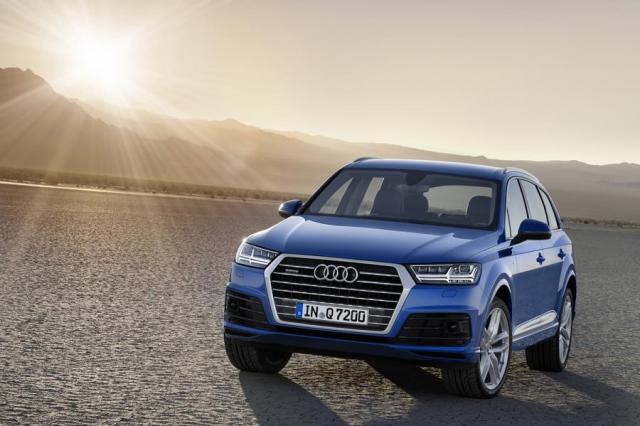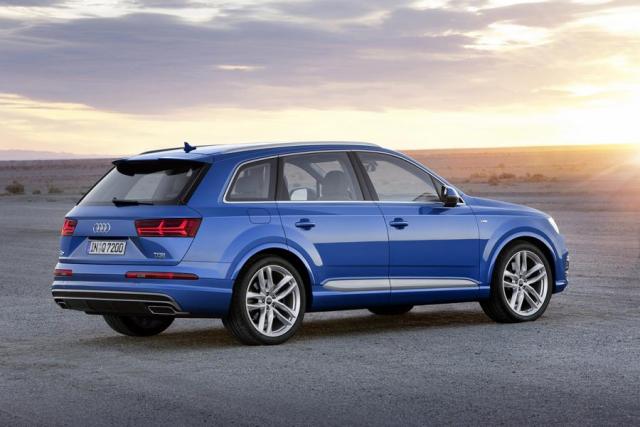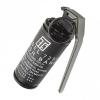Search the Community
Showing results for tags 'conti'.
-
What I notice when i go Merc/BMW/Audi showrroms is that their price on price list is so high but actually there is huge discounts almost all the time. For merc is often in the form of overtrade. So I thought I would share some discounts that I know. Of coz it is updated all the time so maybe the bros here can share what you have heard so it is easier for ppl to have an idea before heading down to the show room. I shall start first: CLA: 173,888, 8k overtrade and 3k service credit 520i business: 242,800, 10k overtrade E-class and S-class got 10k COE discount or high COE rebate at 76k VW Jetta: 118,800
-
Hi, Let me start a new thread. Searched but no such thread yet. Test drove this weekend, it is good price for specification offered. Although engine is 1.5, I find the drive is quite spirited, should be due to EDC that is able to bring the car up to speed with its fast shift, faster than the 1.6 bluehdi C4 can do with its EAT6. The car has all the high specification an entry luxury car offers. I am open to critical opinion such as dci failure, french car with poor quality ..etc and hope owner to offers their experience such as fuel consumption able to meet the paper specification, drive and any electronic failure. Thank you.
- 353 replies
-
- 1
-

-
- renault
- renaultrenault 1.5 dci fluence
- (and 7 more)
-
At every car show or new model introduction, auto manufacturers would always come out with a long list, stating the unique features of their cars, but many a times, these features might just be forgotten over time, or simply taken for granted. These features may be a real technology break through (e.g. engine, gearbox, safety, etc.), or mechanical / electrical (e.g. spoiler, door opening mechanism, head / tail light, etc.). To kick start, anyone still can recall the following terminology? - Twin Door - Bi-Modal Trunk - Waku Waku Gate Sounds familiar? or are they aliens to you? or you think you know something about it? Well these are fanciful names given to boot / trunk / tailgate that open in more than 1 way. Twin Door by Skoda When the 2nd generation Skoda Superb was unveiled in 2008, the car come with many wow factors. But the one that really standout, at least to me, is the dual opening boot lid. It feel just like a small magic show, to see the 4 door sedan opening up it boot in 2 fashion, one like a typical sedan, and the other like a sport back. And after owning one for close to 4.5 years, I can attest to the usefulness of this feature, that ever allowed me to fit in up to 4x 24 - 28" language at one go, and even transporting a 3ft fish tank with the rear seats in-place (not folded). Bi-Modal Trunk by BMW Shortly after the Skoda Superb go on sales in early 2009, BMW follow suit with it own version of dual opening mechanism on the 5 series Gran Turismo Concept (which later debut as the love or hate it 5 GT), and give it the name Bi-Modal Trunk, which sound a little more sophisticated than the Czech brand. While it offer the same flexibility of a hatch back when opened in full (sport back mode), it offer much less practicality when opened in sedan mode, due to it limited access to the boot via the tiny yet wide opening boot lid. Waku Waku Gate by Honda The dual opening mechanism seems very much forgotten till 2015, when Honda introduce it on the new JDM Stepwagon, and somewhat take this concept to the next level, by allowing the tailgate to be used by passenger to access into the last row of the MPV! All are welcome to post the unique features of your car(s), or what you have came across. Up next, what are so special about these MPVs, Nissan Prairie, Toyota Raum and Toyota Isis?
- 243 replies
-
- 26
-

-
https://www.straitstimes.com/singapore/transport/budget-2022-buyers-of-luxury-cars-to-pay-even-higher-taxes so coming Wednesday COE up or down? 🤣🤣🤣 I think not much impact for above OMV $80,000 cars buyers 😭
-
Have to admit that this Asskana Arkana is damn sexy. Truly a French affair. Groupe Renault confirms its desire to break the rules and become the first general vehicle maker to offer an international Coupé SUV. The production version of Arkana is an all-new C-segment (4.54 m) model with an innovative, distinctive design. Built at the Moscow plant and on sale from this summer on the Russian market, it will contribute to the worldwide expansion of Groupe Renault as part of its strategic Drive the Future plan. Combining the elegance of a saloon, the sportiness of a coupé and the robustness of an SUV, the Arkana show-car impressed everyone when it was unveiled at the 2018 Moscow Motor Show. The external design of the production version of the Arkana Coupé SUV differs only slightly from the show-car. It retains the sloping roof line, very high waistline and wide, expressive bumper. The chrome components on the grill and around the windows and C-Shape LED headlights embody the DNA of Renault design, to highlight its elegant appearance. When it goes on the market in summer 2019, the All-New Renault Arkana Coupé SUV will be offered in a range of 7 bodywork colours and 3 finish levels. It will be fitted with 17-inch tyres. A modern, comfortable interior Inside, the Renault Arkana Coupé SUV is all about space, quality, modernity and comfort, due, amongst other features, to materials that are pleasant to the touch, a new multimedia system and the MULTI-SENSE settings. The central console is equipped with an 8-inch touchscreen interface for the Renault EASY LINK multimedia system, which supports Android Auto, Apple CarPlay and Yandex Auto. The driver can personalise many of the components with practical, easy-to-use apps. Renault Arkana also has the benefit of MULTI-SENSE technology, which gives the driver a choice of three driving modes (Eco, Sport, My sense) and 8 ambience colours. This Coupé SUV is fitted with ideal equipment for winter driving - the steering wheel and driver and front passenger's seats are heated. The boot has a dual lighting system and the folding rear seats mean that luggage space can easily be increased from 508 litres to up to 1333 liters. The Renault engineers have also minimised vibrations and optimised the passenger compartment soundproofing on this new Coupé SUV. And thanks to a new Bose audio system, the passengers in the Renault Arkana are bathed in a high-quality sound approaching that of a live performance. 4-wheel drive for all road conditions The versatility and sturdiness of the Renault Arkana Coupé SUV on the road are the fruits of the joint efforts of the Renault-Nissan-Mitsubishi Alliance, and of the Alliance's collaboration with Daimler. It is fitted with a new TCe 150 petrol engine that makes its first appearance on the Russian market. This turbocharged engine delivers 150hp and 250Nm of torque, to combine performance and driving pleasure with market-leading efficiency (7 l/100 km in combined cycle). This engine is coupled with an X-Tronic gearbox, to provide flexibility and responsive acceleration, and with the smart All Mode 4x4-i 4-wheel drive system developed by the Alliance. This system ensures permanent control of the vehicle's road holding to guarantee optimum traction, whatever the conditions. This Coupé SUV boasts a reinforced chassis and a ground clearance of 208 mm, one of the highest in the category. Combined with angles of attack and departure of 18° and 25° respectively, it gives the All-New Renault Arkana true off-road and crossover capabilities. Finally, Renault Arkana has been put through a range of sturdiness and durability tests, including 300,000 km of trials in extreme driving conditions. This rigour ensures optimum comfort, in town or on winding roads, whatever the weather conditions.
- 36 replies
-
- 7
-

-
HI ALL BROS, THE NEW MONDEO LOOK STUNNING AND HAS THE ASTON MARTIN LOOK....BUT ANYONE TEST DRIVE THIS RIDE BEFORE?
- 834 replies
-
- 2
-

-

-
Weird that I never saw this before... a new gen Audi Q7 for 2015. http://www.carmagazine.co.uk/News/Search-Results/First-Official-Pictures/Audi-Q7-2015-unveiled-smaller-lighter-and-more-estate-like/ They say svelte... but that front grill
-

Bentley driver with bad overtaking skills swipes motorcyclist on CTE
chitchatboy posted a blog entry in MyAutoBlog
Here's a case of bad driving judgement gone wrong. Spotted on ROADS.sg facebook page - this red Bentley Continental blocked by a road hogger on CTE towards the City on 18/4/21. The impatient driver overtakes by filtering two lanes to the left but realises that the lane leads off the expressway. In a flash, the driver signals and swerves back to the right and smacks into the innocent bike on the centre lane. Thankfully the cam car managed to catch the Bentley driver in the act. Naturally, all the keyboard warriors waste no youth blaming the Bentley for the accident... https://www.facebook.com/roadssg/videos/142665334476260 -
In the current haze , let us discuss which conti car has the best air con. As air con is not the same as air purifier, how do you guys stay protected? Is there such a thing as an air purifier for car?
- 190 replies
-
- 3
-

-
- mercedes-benzair con
- purifier
-
(and 1 more)
Tagged with:
-
Hi. Wonder if any bros on this tyres yet. Any feedback?
- 25 replies
-
- 1
-

-
The future design direction of new SEAT models has been unveiled tonight as the wraps have come off the all-new SEAT Tarraco. The large SUV - named after the Mediterranean city of Tarragona, a historic cultural centre with a spirit that is young and adventurous - completes the Barcelona-based manufacturer's SUV range. The latest vehicle designed and developed at the facilities of SEAT in Martorell (Barcelona) and produced in Wolfsburg (Germany), marks the third instalment in the company's SUV product offensive and shows a glimpse of the future design language of new SEAT models. Tarraco is the new flagship model of the brand and will bring the company new customers, boost brand image and have an important effect on profits, as this is a model with high contribution margins. SEAT Tarraco sits at the top of SEAT's SUV family, as the bigger brother to both the Ateca and Arona, and mixes state-of-the-art technology, dynamic and agile handling, practicality and functionality with elegant, progressive design. The Tarraco combines the many advantages of its larger dimensions to offer a vehicle that can take on all elements of modern life. The new SUV blends the key attributes of every vehicle in the SEAT range - design and functionality, sportiness and comfort, accessibility and quality, technology and emotion -but in a form that suits a wider variety of lifestyles. The new SEAT Tarraco is designed for drivers who need the usefulness of a five or seven-seater and the practicality of a higher driving position, but are conscious of a vehicle's aesthetics and appreciate the Tarraco's balance between self-confidence and elegance. That balance is maintained across both available trim levels, SE and Xcellence. As the SUV market continues to expand, the SEAT Tarraco will play a key role for SEAT when it is introduced at the very beginning of 2019, strengthening the brand and aiding further growth at a time when the company's sales are rising steadily already. Between January and August, SEAT delivered 383,900 vehicles worldwide, an increase of 21.9% over the same period in 2017. "SEAT is experiencing its biggest product offensive in recent times. The introduction of the SEAT Tarraco, our very first large SUV, forms part of our €3.3 billion investment between 2015 and 2019 in the company's future and the range of vehicles we offer," said President of SEAT, Luca de Meo, "It completes our family of SUVs, to suit every customer's need". Engineering excellence The SEAT Tarraco has been engineered for drivers looking for excitement and functionality in a single vehicle. People who need the practicality of up to seven seats and the space to transport family and friends, but appreciate a vehicle that reacts to the driver's inputs and offers dynamic performance. The key to its nuanced approach to practicality and dynamic behaviour is the latest technology from Volkswagen Group and the MQB-A long wheelbase architecture that underpins the large SUV. The vehicle's Dynamic Chassis Control (DCC) setup gives the perfect balance between a sporty feeling when you are behind the wheel, and a more comfortable ride when you need to cover longer distances, on different types of roads. The driver can select which setting they prefer, but the system can also adapt automatically, modifying the ride depending on the road surface and driving style. The smoothness of the ride quality is matched by the performance, efficiency and reliability of the powertrain options. All engines benefit from direct-injection, turbocharging and start-stop technology and offer power outputs of between 150PS and 190PS. Two petrol variants will be available: a four-cylinder 1.5 litre TSI unit that produces 150PS and is linked to a six-speed manual transmission powering the front wheels, and a 2.0 litre, 190PS offering mated to a seven-speed DSG gearbox and 4Drive total traction system. There are two diesel options, both 2.0 litre TDIs, with power outputs of 150PS and 190PS respectively. The 150PS variant can be connected to either a front-wheel drive, six-speed manual or seven-speed DSG with 4Drive system. The higher powered version is solely available in 4Drive/seven-speed DSG gearbox. Later, the SEAT Tarraco will also benefit from alternative powertrain technologies. "The SEAT Tarraco is a masterpiece of functionality and flexibility, as it offers the space and flexibility customers expect from a large SUV. It is the sportiest vehicle in the segment from a design point of view and also thanks to the dynamic chassis control, which allows you to tune it to meet your driving needs,"said SEAT Executive Vice-President for Research and Development, Dr. Matthias Rabe. The new SEAT Tarraco has all the driving assistance systems needed to make driving more comfortable and secure, even in more demanding driving environments. Well known systems such as Lane Assist and Front Assist including bicycle and pedestrian detection are standard in Europe, while systems such as Blind Spot Detection, Traffic Sign Recognition, Traffic Jam Assist, ACC (Adaptive Cruise Control), Light Assist and Emergency Assist are available as options. Taking safety to the next level for SEAT, the Tarraco SUV also includes Emergency Call, Pre-crash Assist and Rollover Detection, meaning no matter what the situation, the vehicle is designed to meet the most demanding safety standards in order to make the large SUV the benchmark model in the segment. Designed for life Bigger dimensions inspired the design team to find a greater balance between aesthetic integrity and purposeful proportions. And even though the SEAT Tarraco SUV is 4,735mm long and 1,658mm tall, creating a huge interior space and an imposing exterior, the overall design implies a lightness and agility as well as a robustness and perception of space. The front design gives a hint to SEAT's new design language, with a more prominent grille, giving greater presence and character, and while the sharp Full LED headlights retain the company's triangular signature they are set further into the body, giving a more focused appearance. Lighting technology forms an important aspect of the SEAT Tarraco. The SUV uses 100% LED technology for both the exterior and interior as standard on both the Xcellence and Style trims, giving designers greater creative freedom and the customer cleaner, crisper lighting. "I believe the new Tarraco gives a first strong impression when you see it for the first time because of its excellent proportions and elegant, yet sporty design. It delivers a feeling of proudness thanks to its assertive front end, a front end that gives you a hint to what future SEAT's will look like," said Alejandro Mesonero, Director of Design at SEAT, "And as we do in every vehicle we develop, we put a huge amount of our love and passion into the Tarraco's detailing, following our philosophy: If it looks right, it is right." At the rear, where functionality is of immense importance, the emphasis is on a low loading area, but with a lighting concept to express the width and practicality of the SUV. The LED lighting also allows for dynamic rear indicators. The SEAT Tarraco will be available with eight different colours : Dark Camouflage, Oryx White, Reflex Silver, Atlantic Blue, Indium Grey, Titanium Beige, Deep Black and Urano Grey. Inside, designers have worked hard to create an interior that cocoons the occupants, using a horizontal line that spans the dashboard but also emphasises the width of the Tarraco, increasing the feeling of space in the cabin while at the same time inspiring confidence, safety and a level of quality normally found in the premium sector. And as our world becomes increasingly digitised the Tarraco's interior benefits from SEAT's 10.25" Digital Cockpit, streamlining the delivery of important information to the driver, and an 8" large, floating HMI screen where occupants can access SEAT's suite of connectivity options. Finally, when it comes to infotainment systems, The Tarraco will be the first SEAT to feature gesture control functions (when equipped with 8" Navigation Plus).
- 24 replies
-
- 9
-

-
Following Skoda with it new Octavia, the new Jetta seems to be much larger than the existing model, and likely to hit close to 4.7m in length. Design wise, I am seeing hints of Audi (headlight), Honda (grille) Ford (C pillar) and Hyundai (taillight). Hopefully the car look better in metal, just like the current B8 Passat. Photos were rumored to be taken at VW Mexico manufacturing facilities. In case you still don't believe this is the new Jetta, but some other VW model for Brazil or China, here are some spy shots of the new Jetta taken earlier.
- 47 replies
-
- 8
-

-
- volkswagen
- jetta
-
(and 9 more)
Tagged with:
-
hi bros, I though this new land rover simply looks stunning. Its rival include F-pace, x4, glc coupe and macan. Was revealed earlier this month in UK. I guess will reach our sunny island in 2018? What you guys think?
- 61 replies
-
- 3
-

-
- land rover
- conti
-
(and 7 more)
Tagged with:
-
With the introduction of the Audi e-tron, the Audi brand presents its first fully electric production model. The mid-size SUV is electrified, performance oriented and fit for every aspect of daily life. In combination with a comprehensive range of available charging solutions for home and on the move, customers can enjoy fully electric driving without compromise. The Audi e-tron is an electric SUV for sport, family and leisure. It is 193 inches long, 76.3 inches wide and 65.5 inches high. It offers the spaciousness and comfort commensurate with an Audi. With a wheelbase of 115.1 inches, the Audi e-tron has ample space for five occupants and cargo. The total luggage capacity is 28.5 cu ft. (57.0 cu ft. seats down), equipping the electric SUV for short jaunts and long road trips. Electrification visualized: the exterior design The Audi e-tron reflects the fundamental idiom of Audi design - translated into the electric age by new, stylistically refined aerodynamically focused details. Consistent with one of the brand's SUV models, the Audi e-tron bears the octagonal-design Singleframe grille with vertical struts. Its uniquely enclosed grille is presented in platinum gray - identifying it as a fully electric model. At the lower edge of the standard LED headlights, four horizontal struts, reminiscent of a charging status indicators, create the e-tron-specific signature in the daytime running lights. For the first time this is integrated directly into the headlights. Light is used as a signature design feature. Another important design element is the continuous shoulder line. It extends from the headlights, along the flanks, to the rear lights, giving the Audi e-tron a sense of stature and presence. The expressive design approach of the sill area with the black inserts on the door trim visualizes the location of the battery and thus the energy center of the Audi e-tron. Meanwhile, the roof stretches across the muscular body, which displays clear SUV attributes with its quattro blisters over the wheels and prominent D-pillars. At the sculptural rear, the long roof spoiler and wide diffuser accentuate the sporty look. One distinct element on the e-tron is the light strip connecting the LED rear taillights, consistent with the brand's D segment offerings including the Audi A7, A8 and Q8. With their horizontal emphasis, the tail lights echo the graphics of the daytime running lights that are graphical representation of full battery charge. Meanwhile the four cross-slats in the diffuser draw attention to the absence of tailpipes, another reference to the fully electric drive. Every detail matters: aerodynamics and efficiency When developing the Audi e-tron, the exterior designers worked in close collaboration with the aerodynamics experts. The result of this attention to aero is an array of high-tech efficiency solutions, such as the regulated cooling air inlet with ducts for cooling the front brakes and the adaptive, speed-dependent air suspension that is standard on the Audi e-tron. The standard-fit 20-inch wheels are aerodynamically optimized and fitted with 255/50 tires. These are especially engineered for their ultralow rolling resistance. The fully clad underbody including aluminum plate to help protect the high-voltage battery likewise plays a vital role in lowering drag. The screw connection points are recessed to deliberately create minor vortices so that the air flows even better. In addition to aerodynamics, thermal management has an important role to play. The standard equipped heat pump uses the waste heat from the electrical components - up to 3 kW of the actual power loss are used for cabin heating and air conditioning as well as cooling the electric motor. Depending on ambient temperature, the heat pump's design at can help contribute to the Audi e-tron range by up to ten percent. Highly flexible thermal management also allows fast direct-current charging to help maintain a long battery operating life and repeatable road performance. Sporty efficiency: drive and recuperation From high-efficiency to high-performance - the particularly appealing component of the Audi e-tron's drive is its breadth. The two electric motors accelerate the e-tron from 0-60 mph in 5.5 seconds and reach a top speed of 124 mph. The advantage of the electric motor is felt especially in its impressive off-the-line starting performance from a standstill. The maximum drive torque is reached in 250 milliseconds - a performance worthy of a sports car. US horsepower and torque figures will be available closer to launch. The two asynchronous motors (ASM) of the Audi e-tron are especially robust. Their sophisticated cooling concept is designed to keep the temperature level low. Single-stage transmissions transfer the torque to the axles via the differentials. Each motor is supplied by power electronics that act in close consort with the powertrain control unit. When the Audi e-tron is traveling at moderate speeds, in the interest of efficiency it is powered mainly by the rear motor. When coasting, the motors operate free from magnetic drag torque - another strength of ASM technology. The Audi e-tron uses an innovative recuperation system encompassing both electric motors, to boost efficiency. On average, our engineers estimate that this system is responsible for as much as 30 percent of the e-tron's range depending on the conditions, terrain and driving style. The electric SUV can recover energy in two ways: by means of coasting recuperation when the driver releases the accelerator, or by means of braking recuperation by depressing the brake pedal. When pressing the brake pedal, the electronic control unit computes within milliseconds how much pressure the system needs to build up for the specific braking process required. A high-performance electric motor supplies the necessary energy. The integrated brake control system is approximately 30 percent lighter than a conventional system thanks to its more compact design. The conventional vacuum pump is no longer needed in this configuration. According to the driving situation, the brake control system decides whether to use the electric motors as alternators or to use the friction brakes - all without the driver noticing. Up to 0.3 g, the Audi e-tron is decelerated solely by the electric motors - that covers over 90 percent of braking scenarios. So energy is returned to the battery in practically all normal braking instances. Above this deceleration value, for example in a full brake application, the friction brakes come into play. Thanks to a newly designed electro-hydraulic activation principle, they are particularly quick to respond. The driver can select the degree of energy recovery in three stages by means of paddles on the steering wheel. In the lowest setting, the Audi e-tron glides with no additional braking torque. At the highest stage the electric SUV is slowed more noticeably - the driver can slow down and accelerate solely via the acceleration pedal, if desired. This creates what is referred to as a one-pedal feeling. The efficiency assist additionally promotes an economical driving style by prompting the driver when he should move his foot off of the accelerator pedal. It does this by using the navigation system's route data, radar information and camera images, Depending on the traffic situation the predictive system makes the Audi e-tron slow down proactively and in turn, recuperate. Strong performance on a variety road surfaces: electric all-wheel drive and suspension In the Audi e-tron, the brand introduces a new generation of quattro drive as standard: electric all-wheel drive. This new system enables the electric SUV to achieve optimum traction in a variety of weather conditions and on challenging road surfaces. In a similar way to the mechanical quattro with ultra technology, the second axle - in this case, the one at the front - can be connected predictively. This happens if the driver requests more power than the rear electric motor can supply, or predictively even before grip noticeably declines in wintery conditions or in dynamic cornering. The electric motors are an ideal power source for the high-precision, ultrafast electric quattro. Torque can be controlled spontaneously - the output can be redistributed between the axles within a fraction of a second. Towards the limits of driving dynamics, torque vectoring enhances handling by means of brief wheel brake applications. The dynamic talents of the Audi e-tron are especially apparent on a low-friction surface, such as snow. For the first time in the e-tron, the quattro torque vectoring are integrated on the central suspension controller, distributing the torque with a slight rear bias. The innovative traction control regulates wheel slip by the millisecond directly via the electric motors' power electronics. The powertrain control unit is integrated with the built-in brake control system and helps maintain an optimum power flow between tires and road surface. Together with the electric all-wheel drive, this produces the high traction and directional stability that are typical of an Audi. This is especially evident in the four-stage Electronic Stabilization Control, which offers the "sport" and "offroad" modes and can also be fully turned off when desired. The SUV's driving character can be adjusted with the standard Audi drive select across seven profiles - from comfortable, through efficient, to distinctively sporty - according to the driving situation, road condition or personal requirements. Some of the modes also influence the standard air suspension with adaptive dampers. Depending on road speed and driving style the suspension adjusts the body's ride height by up to 76 millimeters (3.0 in). Especially on long journeys, a lower ride height improves the air flow around the body, thus helping to increase range. In the "offroad" mode, the Audi e-tron is primed for driving away from paved roads: Its ground clearance is increased by 35 millimeters (1.4 in) compared with the standard level. If the driver activates the additional function "Raise" in Audi drive select, the body can adapt to another 15 millimeters (0.6 in) higher. The electric SUV is both uniquely dynamic and stable in changing driving conditions. The low position of the drive components helps in that regard: The battery system is optimally matched to the dimensions of the Audi e-tron body and is located between the axles in the form of a flat, broad block beneath the passenger compartment. That places the Audi e-tron's center of gravity a few centimeters lower down than in a conventional SUV. The axle load distribution is balanced at approximately 50:50, and self-steering behavior is neutral. The front and rear suspensions take the form of five-link designs. The standard progressive steering adjusts its ratio according to steering angle and provides speed-dependent assistance. The further the steering is turned, the more direct it becomes - this helps make the vehicle agile and precise to move with little effort. This advantage comes into play in city driving and for tight maneuvering. The optionally available trailer tow hitch can increase the Audi e-tron's versatility, for example as a sport and leisure vehicle. When equipped with the tow package, the Audi e-tron has a maximum tow rating of 4000 lbs. It can also be used for mounting a cycle carrier, for example. 95 kWh of energy: the high-voltage battery system The battery system in the Audi e-tron is located beneath the cabin and is 2.28 meters (90 inches) long, 1.63 meters (63.6 inches) wide and 34 centimeters (13.4 in) high. It comprises a total of 36 cell modules in square aluminum housings, each of which is roughly the size of a shoe box. They are arranged on two levels, known as "floors" -a longer lower floor and a shorter upper one. At market launch, each module is equipped with twelve pouch cells having a flexible outer skin of aluminum-coated polymer. The battery operates with a nominal voltage of 396 volts and stores 95 kWh of energy. A cooling system of flat aluminum extruded sections divided uniformly into small chambers has the task of maintaining the battery's high-performance operation over the long term. Heat is exchanged between the cells and the cooling system beneath them via a thermally conductive gel pressed beneath each cell module. In what is a particularly resourceful solution, the gel evenly transfers the waste heat to the coolant via the battery housing. A strong surround frame and lattice-type aluminum structure that holds the cell modules is designed to protect the battery block. A substantial aluminum plate provides protection against damage from flying stones or curbs, for instance. These measures demonstrate how the Audi engineers have developed the batter and cooling systems with safety in mind. The weight of the battery system including the housing pan with intricate crash structures is roughly 700 kilograms (1543.2 lb). It is bolted to the underbody of the Audi e-tron at 35 points. This increases the torsional rigidity of the body, which in turn integrates numerous aluminum parts such as the floor plate in the rear structure, the doors, as well as the hood and tailgate. The cabin features components made from heat-formed ultra-high-strength steel. At up to 150 kW: charging on the move and at home Designed for efficiency and integration, the e-tron is engineered for both AC and DC charging via the widespread SAE J1772 and Combined Charging System (CCS) standards. In an industry first to-date, the e-tron debuts a DC fast charging capability of up to 150 kW available at select high-speed public charging stations, this capability can deliver up-to an 80 percent charge in only approximately 30 minutes. For customers' residential charging needs, a standard 9.6 kW AC capsule charger (Level 2, 240-volt/40 amps) is provided and designed to deliver a fresh charge overnight. This charger will include plugs that can utilize both a standard 120-volt household outlet (1.2 kW) as well as a fast-speed 240-volt NEMA 14-50 outlet (9.6 kW). Audi e-tron buyers will have the opportunity to ready their homes for their all-electric SUV with available Amazon Home Services in the first-ever home charging collaboration between Amazon and an automaker. "Audi Home Charging powered by Amazon Home Services" offers e-tron buyers a fully-digital experience for in-home electric vehicle charging installations, designed to make the process of home charging set up as easy as ordering the millions of others items and services U.S. customers depend on from Amazon. Furthermore, customers can define their own personal priorities, such as charging when electricity is less expensive where available. With the myAudi app, it can be accessed from the convenience of the home. It can be used to plan, control, and monitor the charging and pre-heating/-cooling of the electric SUV. The customer can set a departure time, for example, so that the Audi e-tron is charged and/or heated/cooled at the desired time. Customers can even choose to heat or cool certain zones in the car. On cold winter days, for example, customers can turn on the optional seat heating. The app also displays charging and driving data. For charging on the go, the e-tron will be supported by a nationwide charging network, "Powered by Electrify America." By July 2019, this network will include nearly 500 fast-charging sites complete or under development throughout 40 states and 17 metro areas. Offering advanced charging, Electrify America's chargers are capable of delivering up to 350kW. With the purchase of the Audi e-tron customers will receive 1,000 kWh of charging at Electrify America sites over four years of ownership. Place of relaxation: the interior The interior of the Audi e-tron represents performance, intelligence and lightness - attributes that are manifested in an array of details. A generous arc, the wraparound dash, envelops the stepped dashboard as far around as the sculptural door trims. The entire cabin has a strong driver orientation and in addition to the central Audi virtual cockpit featuring a slim, visually free-standing display, the two MMI touch response displays are angled towards the pilot. When off, the upper screen blends almost invisibly into the large black-panel surface. In clear contrast, the lower display sits on the broad center console. The central tunnel rests on open side panels and incorporates a storage compartment, cup holders as well as the standard Audi phone box for inductive smartphone charging. This solution combines lightness with functionality. The hand rest that incorporates the gear selector appears to float above the console. The driver selects the drive position in a one-touch action with a movement of the thumb and index finger. In every equipment line, the interior of the Audi e-tron presents exceptional upholstery materials, colors, and inlays. The Audi e-tron meets our highest quality standards in terms of interior build quality and choice of materials such as the available Valcona leather seats or the natural wood inlays. The stitching on the seats creates a motif that evokes the precision of electric circuit boards. Typically full-size: spacious and comfortable Not only does the interior have an airy design, it genuinely offers ample space. The Audi e-tron offers excellent interior packaging -interior length, second-row leg room, and headroom front and rear provide comfortable seating for five adults. In the rear, there is a flat plateau instead of the center tunnel usually found in conventional models -resulting in additional space. The luggage capacity totals 28.5 cu ft, including an additional handy storage compartment beneath the front lid. This storage space is designed to accommodate the vehicle tool kit and mobile charging cable. With the rear seat backs folded down, the Audi e-tron has up to 57.0 cu ft of luggage space. The tailgate can be opened and closed electrically as standard for ease of loading, and can be operated by a foot gesture when the key is in your pocket or purse. As well as the car's spaciousness, its standard of comfort and convenience is what you would expect from a typical Audi. The standard panoramic glass sunroof helps keep the interior bright and intensifies the impression of airiness and space. In addition, four-zone automatic air conditioning is standard with the option for available air quality package. The latter helps to maintain premium air quality by means of an ionizer and aromatization, the intensity of which can be adjusted over several levels. Multi-adjustable customized contour front seats with massage function are available as well. The available contour/ambient lighting package creates highlights after dark: It illuminates surfaces softly, edges sharply, and also back-lights the e-tron badge on the dashboard. A new level: acoustics and sound With its combination of electric drive and a comfortable, sophisticated interior, the Audi e-tron creates a new feeling for mobility. Especially when driving in the city, it radiates an almost perfect sense of calm. The only sounds are from its tires and the gentle hum of the electric motors. The body has special soundproofing in all zones that could transmit noise interference and help reduce wind vibrations. This makes the Audi e-tron the perfect platform for the standard Bang & Olufsen Premium Sound System with 3D sound in the front. It allows the music to be enjoyed precisely how it was recorded. Digital world: operation and displays In keeping with the all-new Audi C and D segment portfolio, the Audi e-tron features the MMI touch response operating system. Its two large, high-resolution displays - the upper one with a diagonal of 10.1 inches and the lower one 8.6 inches - take the place of almost all conventional switches and controls. Operation is swift and simple: When the finger activates a function, it triggers a tactile and acoustic click by way of confirmation. The few remaining buttons, for example for the lights, are also available with touch response technology if desired. In the upper display, the driver controls the infotainment, telephone, navigation, and special e-tron settings - this allows the activation of a charging timer or specifying the type of desired recuperation, for example. In the lower screen text input, comfort function selections and the HVAC are all managed with the wrist resting comfortably on the gear selector lever with integrated support. The menu structure is intuitively logical and flat like on a smartphone, including freely configurable favorites and start screens. In addition, the driver can activate a wide range of functions using natural language recognition. Information on destinations and media is either available on board or can be delivered from the cloud at LTE speed. The system understands spoken commands; the dialog manager asks questions if necessary, allows corrections, offers choices, and also defers to the speaker when interrupted. Alexa has been fully integrated into the MMI system and is on board for customers to access the many of the same features and services in the Audi e-tron as they can in their home or through other Alexa-enabled devices. You can check news, weather and sports scores, order groceries and add things to your to-do list, stream music and audiobooks via Audible, Amazon Music and TuneIn. And you access the wide variety of Alexa skills. And with smart home controls, you can lock the doors, turn off the lights, and close the garage door directly from the vehicle - all you have to do is ask. The digital display and operating concept in the Audi e-tron is rounded off by the standard feature of the Audi virtual cockpit, which can be operated from the multifunction steering wheel. Its display benefits from the very high resolution of 1,920 x 720 pixels and new e-tron-specific graphics. The driver can choose between three views: In the classic view, the power meter and speedometer are presented as large dials; in the infotainment view, they appear smaller and the focus is on the navigation map. Additionally, with the standard Audi virtual cockpit plus an additional view is shown that puts the power meter center stage. The head-up display complements the displays as an option. It projects important information straight onto the windscreen. Top-caliber connectivity: navigation, Audi connect The Audi e-tron is equipped with MMI Navigation plus as standard. The top-end media center supports the high-speed data transmission through LTE Advanced with integrated Wi-Fi hotspot for passengers' mobile devices through a 6-month unlimited Audi connect PLUS trial subscription. The navigation system can make predictive destination suggestions based on previous journeys. The route is calculated both on-board in the car and online on the servers of the map and navigation provider HERE, using real-time data for the overall traffic conditions. The online services of Audi connect PRIME ideally complement the navigation system, especially the e-tron route planner. The customer can use it either in the in-car MMI touch system or in the myAudi app. In both cases they are shown the suggested route with the available charging points. The navigation system considers not only the battery's charge but also the traffic conditions and includes the required charging time in its arrival time calculation. The e-tron route planner provides charge locations as part of the route planning. Arrive more relaxed with comprehensive driver assistance systems Whether parking, in the city or on long journeys, the Audi e-tron can make life easier for its driver in life's many situations. The system at the heart of the optional Driver Assistance Package is adaptive cruise assist, which comfortably provides longitudinal and lateral control in traffic jams or at highway speeds. It supports the driver with accelerating, braking, maintaining speed, keeping distance. The system can detect lane markings, roadside structures, vehicles in adjacent lanes and vehicles driving ahead. In construction zones, the Audi e-tron automatically adapts its speed to the traffic situation, taking into account the speed limit. If the lane is too narrow to allow side-by-side driving, adaptive cruise assist enables offset driving through narrow stretches. In conjunction with efficiency assist it predictively slows down and accelerates the Audi e-tron based on its evaluation of sensor and navigation data as well as road signs. It automatically adjusts to the current speed limit, reduces the speed before corners, during turning and on roundabouts. The system can maintain a driving style that reflects the driving program selected - from every day to sporty. Driver assistance features for urban areas include intersection assist, rear cross traffic assist as well as lane change and vehicle exit warning. The 360 degree cameras provide multiple views to facilitate centimeter-precision maneuvering, while showing crossing traffic. The 3D view with freely selectable perspective is the highlight. Park steering assist eases the parking process. It steers the Audi e-tron independently into parallel parking and perpendicular parking spaces - forward or backward. The driver only has to accelerate, select the gear and brake. Operating as standard behind the driver assistance systems in the Audi e-tron is the central driver assistance controller. It continuously computes a differentiated picture of the surroundings. The required data is obtained - depending on the selected options - from up to five radar sensors, six cameras, twelve ultrasound sensors and the laser scanner. e-tron Reservation System Accompanying the debut of the e-tron, customers are now able to configure their e-tron and reserve their vehicle with a fully refundable $1,000 reservation fee ahead of delivery in mid-2019. This new Audi reservation system is part of how Audi of America will create a digital ecosystem for Audi owners to confidently go electric. After customers place a reservation, they will be able to track it online and with their local dealer. As an electric SUV that includes integrated digital tools, in-home charging solutions, and the support of Audi of America's 303 dealer partners - e-tron owners can confidently choose electric performance knowing they have the support of a full Audi ecosystem.
-
http://singaporeseen.stomp.com.sg/stomp/sg...gkok_green.html Look at the BMW's bonnet...... Then look at the other car's. Not much damage done to the side wor.....
-
Found that conti such as VW, Citroen and Peugeot uses dials instead of lever in japanese car to adjust seat recline angle. Why do they use that when lever is so much more convenient and faster to adjust?
-
Hi Guys, I've only owned Asian cars so far and recently feel like getting a conti car. May I know how much more does it cost to maintain a conti car say around the level of Golf GTI, C250 & X3? I'm ok with the purchase price but my friends are warning me that the real costs comes if after buying. Maintenance, parts replacements, repairs and the downtime at workshops; the frequency as well as waiting time for parts. So far I've owned a Corolla, Cefiro, Waja, Cerato, Stream and Wish. Cars never spent more than 1 night at workshops.
- 75 replies
-
- 1
-

-
- volkswagen
- volkswagencost
-
(and 4 more)
Tagged with:
-
So for the last 2 weeks in a battle to select one HB for missus Citroen C4 SX. Decided to go for a new one new as it made more sense as the depreciation is no different from used one. Below are my personal FR where most are conti based made choices with budget below 120k: 1.Opel a. Astra K: Good looking and with most features under 100k but alas, no more selling. Would have want to choose this. b. Crossland: Too cartoon like. Next........ 2.Audi a. A3: Looks handsome but most pricey at 120k. Though FL but profile does look a bit dated. 3. VW a. Golf: The entry golf is just below 100k but features are rather pathetic. Halogen lights and no keyless start. 4.Nissan a. Note: Made in Jap but whole car looks budget and from the 80s. 4. Hyudai a. i30: Looks good with fresh design inside out. But lacked the conti feels although its czech made. 5. Honda a. Fit/jazz: Looks and feels much better then Note and both cars rear legroom is generous. Its an understatement to say its big. 6. Mini a. One: Impressive build quality and cutest of them all with a BMW 3 cylinder 1.5L unit. Drive is good and the handling is impressive that points to everywhere you wanna to. Ride a bit jittery probably because of short wheelbase 7. Seat a. Leon/ibiza/ Ateza: None with build quality that impressed me. 8. Skoda: a. Rapid: As above of Seat. 9. Used (fairly new) wowo V40 a. could not stand the ah pek style steering wheel. Next...... 10. Infinity Q30. almost want to go showroon but was a diesel unit and she travels too little for it. Next.... 11. Pugeot a. 308/2008: rear legroom small and uncomfy. No discount or promotion. What would be your choice and we have decided it, more like i decided for her.
- 192 replies
-
- 6
-

-
- hatchback budget
- hatchback
-
(and 3 more)
Tagged with:
-
Any bro know the esimate price for above mention tire and review? I'm looking at 235/45-18. Contemplating between Conti csc5 and Mic pss, looking for better grip and low noise. Thanks.
-
Hi, anyone know of workshop and stockist for Land Rover?
- 8 replies
-
- land rover
- land roverland rover
-
(and 6 more)
Tagged with:
-
Any dealer have good price for 235/55/r18? So far best quote was $230 per pc
- 10 replies
-
- 1
-

-
- mitsubishi
- tyres 18 continental
-
(and 4 more)
Tagged with:
-
Hi Bro Any idea which Japanese, Korean, Conti model usese the Aisin GB?? I know Lexus?, Citreon GP... any other??
-
Hi MCF-ers, just need to ask this question to get it over my mental calculations. Im driving a BMW 316i for close to 2years now (since Nov 2014) and im looking to change to another ride with a larger interior space (MPV / SUV / Stationwagon). I searched through Sgcarmart and find that some 2013 cars are quite "value for $$". My current monthly installments (5years loan) is about $1.6k. The 2013 cars i shortlisted, monthly installments ranges from $1.15k - $1.2k for 7years loan. I know i am a itchy backside person having changed a few cars within 10years of driving. so i think i might change cars normally 2-3years of ownership. I was looking at Audi A6 Avant or some Conti/Jap SUVs price ranging from $125k-$140k. Depre is around 16-17k/year. I think depreciation will not matter to me since i most probably wont drive the full 10years. As we all know, 2013 was record breaking for COE prices. Most of the 2nd hand cars i saw had $93k COE and the prices listed are now almost 40% off the then listed prices (not sure of any discount or what when 1st owner bought) for a short 3years usage. Can any helpful soul enlighten me? Thanks very much!
-
Hey guys, I have tested a few car, kia caren, hyundai tucson, subaru forester, nissan x trail, toyota wish, grand piccasso, peugeot 5008, the japanese aircon is always the coldest, especially toyota.Anyone know why?
-
Come to think of it, I often hear people say conti car not suitable for SG climate. That's why got engine problem, breakdown,etc. And they will say better to get sushi/kimchi car instead.... But Japan has 4 seasons, and so does Korea.... just like those conti cars from Europe..... So there is no basis at all to this claim? Or must buy those Made-In-Thailand Toyotas then can tahan SG climate?


.png)












